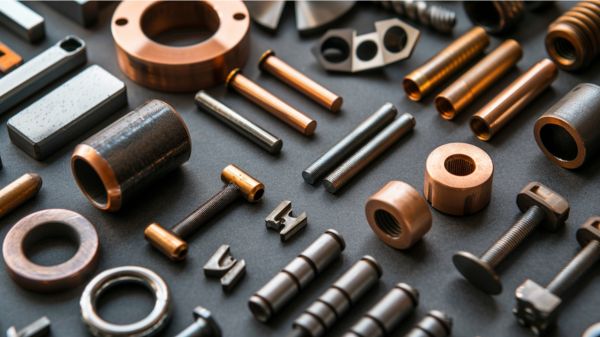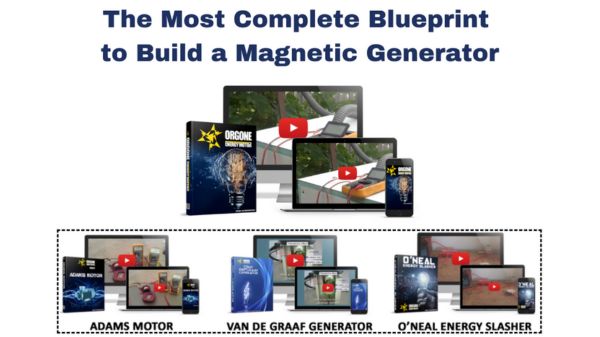How to Enhance Your Generator With the Right Magnet Selection
Enhancing your generator with the right magnet selection is like unlocking its hidden potential, allowing it to perform at its best. But how do you choose the right magnets? What factors should you consider? And which types of magnets are best suited for generator enhancement?
In this discussion, we will explore the intricacies of magnet selection and delve into the various ways in which magnets can improve your generator’s performance and efficiency. So, if you’re looking to take your generator to the next level, keep reading to discover the secrets of optimizing your generator with the right magnet selection.
Key Takeaways
- Proper magnet selection enhances generator performance, efficiency, and longevity.
- Neodymium magnets (NdFeB) maximize generator efficiency through their high magnetic strength and stability.
- Different types of magnets, such as ceramic, samarium cobalt, alnico, and ferrite, offer alternatives for specific applications.
- Magnet configuration on the rotor determines generator output voltage and power generation capability.
Understanding Magnet Selection
When it comes to enhancing your generator, understanding magnet selection is of utmost importance. The magnetic field produced by the permanent magnets used in generator design plays a critical role in its performance.
Neodymium (NdFeB) magnets are commonly chosen for their high magnetic strength and efficiency. Temperature stability, coercivity, and magnetic remanence are key factors to consider when selecting magnets.
Proper magnet selection is crucial for optimizing generator performance, efficiency, and longevity. By choosing the appropriate magnets based on their properties, you can significantly enhance the overall performance and operational efficiency of your generator.
This not only leads to increased power output but also ensures a more reliable and cost-effective energy generation system. So, understanding magnet selection is essential for achieving the desired liberation in generator performance.
Factors to Consider in Magnet Choice
When considering the factors for magnet choice in enhancing your generator, two important points to analyze are:
- Magnet strength and type, as well as compatibility with your specific generator system. The strength of the magnet is crucial in determining the overall performance and efficiency of the generator.
- The type of magnet, such as neodymium (NdFeB), offers high magnetic strength and stability.
Additionally, ensuring compatibility between the magnet and generator is essential for optimal functionality and longevity of the system.
Magnet Strength and Type
To enhance the efficiency and performance of your generator system, carefully consider the magnet strength and type during the selection process. Neodymium magnets, also known as NdFeB magnets, are the preferred choice for their exceptional strength and magnetic properties in generator applications.
When selecting magnets for optimal generator performance, factors such as temperature stability, coercivity, and remanence are key considerations. Proper magnet selection directly impacts the efficiency, longevity, and overall output of a permanent magnet generator.
It’s crucial to choose the right magnet type and strength to maximize the output of your generator. To achieve this, a strategic combination of powerful magnets and effective magnetization techniques is essential. By taking these factors into account, you can significantly enhance the efficiency and performance of your generator system.
Compatibility With Generator
Consider the magnetic remanence, coercivity, temperature stability, strength, and durability of neodymium (NdFeB) magnets when selecting the right magnets for your generator system. These factors are crucial in ensuring compatibility with your generator and maximizing electricity generation.
Here are three key considerations to keep in mind:
- Magnetic Remanence and Coercivity: Evaluate the magnet’s ability to retain its magnetic properties and resist demagnetization. A high remanence and coercivity ensure stable and consistent performance in your generator.
- Temperature Stability: Assess the magnet’s ability to maintain its magnetic properties under varying operating temperatures. Choose magnets with high temperature stability to ensure optimal performance throughout the generator’s lifespan.
- Strength and Durability: The magnets in your generator must withstand the mechanical stresses and high-speed rotations. Look for magnets with high strength and durability to ensure long-lasting and efficient electricity generation.
Types of Magnets for Generator Enhancement
Neodymium (NdFeB) magnets are widely utilized in generators due to their exceptional magnetic strength and performance. These magnets are ideal for magnet generators and generator systems that require high magnetic field strength.
However, there are other types of magnets that can be used to enhance generator performance based on specific requirements. Ceramic magnets, although less powerful than neodymium magnets, are cost-effective options for certain generator applications.
Samarium cobalt (SmCo) magnets offer high resistance to corrosion and high-temperature stability, making them suitable for demanding generator environments. Alnico magnets, composed of aluminum, nickel, and cobalt, provide excellent temperature stability and are used in specialized generator designs.
Lastly, ferrite magnets, also known as ceramic magnets, are durable and affordable options for generators requiring lower magnetic strength. Choosing the right magnet type is crucial for optimizing generator efficiency and performance.
Evaluating Magnet Performance and Efficiency
To evaluate magnet performance and efficiency, you need to consider several criteria. Factors such as magnetic strength, coercivity, and remanence play a crucial role in determining the effectiveness of magnets in generators.
Magnet Selection Criteria
When evaluating magnet performance and efficiency for generator applications, it’s crucial to consider factors such as coercivity, remanence, and temperature stability.
Neodymium magnets, known for their high magnetic strength, are preferred for permanent magnet generators (PMGs) due to their excellent performance. Proper magnet selection directly impacts generator efficiency and output, making it a key consideration in enhancing generator capabilities.
To engage the audience, here are three important criteria to consider when selecting magnets for generator applications:
- Coercivity: The ability of a magnet to resist demagnetization is important for maintaining long-term magnet performance and stability.
- Remanence: This refers to the magnetic field strength of the magnet and determines the generator’s power output.
- Temperature stability: Magnets should be able to withstand high temperatures without significant loss in magnetic properties, ensuring reliable and efficient generator operation.
Assessing Magnet Efficiency
Assessing magnet efficiency is crucial for evaluating the performance and effectiveness of magnets in enhancing generator capabilities. Neodymium magnets, known for their high magnetic properties, are preferred choices for maximizing generator output. Coercivity and remanence are important factors in determining magnet efficiency.
Coercivity refers to a magnet’s ability to resist demagnetization, while remanence measures its residual magnetism. By assessing these properties, you can choose magnets that provide optimal performance for your generator. Proper magnet selection is essential for maximizing efficiency, longevity, and overall output capacity.
Installing Magnets in Your Generator
Achieving maximum magnetic field strength and efficiency in your generator requires careful and precise installation of magnets. To ensure optimal performance, consider the following steps:
- Use neodymium magnets: These magnets have strong magnetic properties and high coercivity, making them ideal for generator applications.
- Align magnets with coils: Proper alignment of magnets with the coils is crucial for optimizing electromagnetic induction and output performance.
- Magnetize magnets appropriately: By applying the right magnetic field to the magnets during installation, you can enhance their magnetic strength and overall generator efficiency.
Strategic placement of magnets on the rotor is also essential. It determines the generator’s output voltage and power generation capability. Follow these guidelines to install magnets correctly and harness the full potential of your generator.
Maximizing Generator Output With the Right Magnet Configuration
To maximize the output of your generator, it’s crucial to carefully configure the magnets for optimal magnetic field strength and efficiency. The right magnet selection and placement are key factors in achieving this goal.
Neodymium magnets, specifically NdFeB magnets, are preferred for generator applications due to their high magnetic strength and temperature stability. These magnets, combined with efficient magnetization techniques, can significantly enhance the efficiency and output of your generator system.
Magnet remanence and coercivity also play crucial roles in determining the performance and longevity of the generator. By properly aligning and placing the magnets in your generator system, you can maximize the magnetic field strength, which in turn improves the overall efficiency of the generator.
Selecting the right magnets and configuring them correctly will help you achieve optimal generator output and efficiency.
Frequently Asked Questions
What Is the Best Magnet Shape for a Generator?
The best magnet shape for your generator is typically cylindrical or disc-shaped. These shapes maximize magnetic field strength, resulting in efficient performance. Cylindrical magnets offer uniform distribution, while disc-shaped magnets provide concentrated flux, enhancing output and efficiency.
How Do You Increase the Magnetic Field of a Generator?
To increase the magnetic field of your generator, focus on increasing efficiency, optimizing output, and employing magnetic field manipulation techniques. These methods will enhance the generator’s performance and maximize its magnetic field strength.
How Does the Strength of a Magnet Affect a Generator?
The strength of a magnet directly affects a generator by increasing power output. When selecting magnets, consider their size and weight as criteria. Optimal magnet strength is essential for enhancing generator efficiency and performance.
Which Magnet Is Best for Generator?
The best magnet for your generator depends on factors such as magnet size, magnet material, and magnet placement. Consider these aspects carefully to optimize your generator’s performance and efficiency.
Conclusion
By carefully selecting the right magnets for your generator and considering factors such as temperature stability, coercivity, and magnetic remanence, you can significantly enhance its performance and efficiency.
Neodymium magnets, known for their strong magnetic properties, are often preferred for permanent magnet generator applications. By combining powerful magnets with effective magnetization techniques and appropriate core materials and winding configurations, you can optimize output and extend the longevity of your generator.
With proper cooling, thermal management, and voltage regulation systems, stable performance and maximum output voltage can be achieved, leading to exceptional generator performance.







